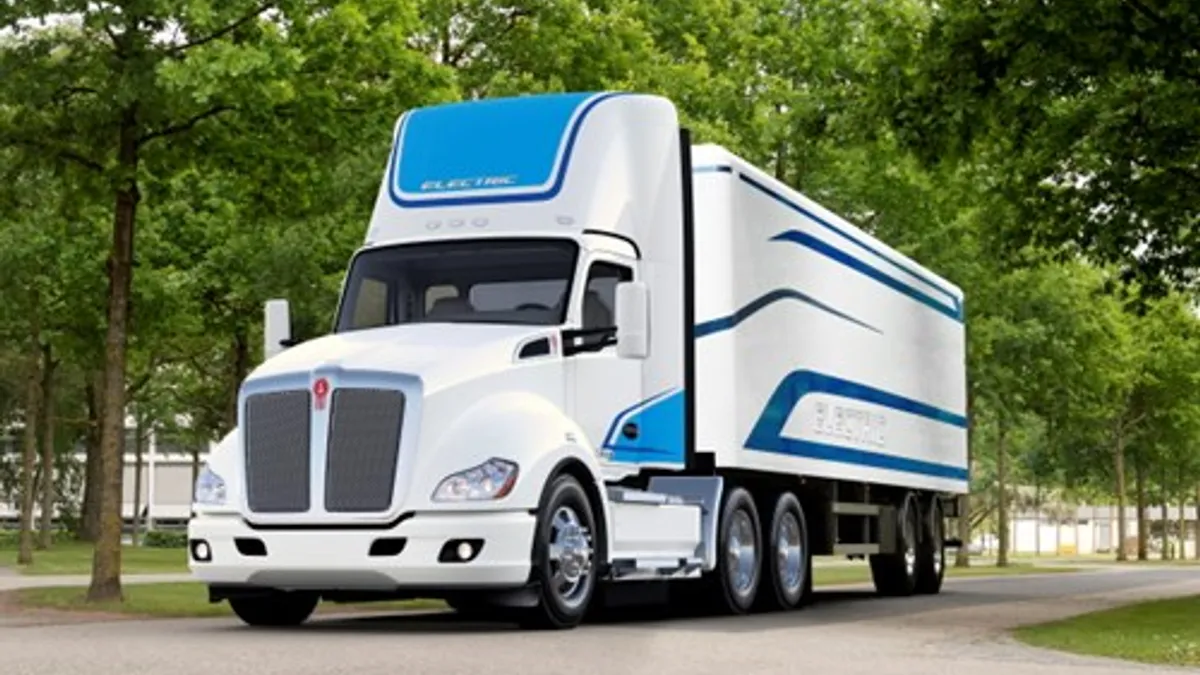The following is a contributed article by David Farnsworth, Camille Kadoch and Nancy Seidman, principal, associate and senior advisor, respectively, at the Regulatory Assistance Project.
Trucking in the U.S. is an $800 billion industry. We all depend on trucks to maintain fast delivery times and distribute products safely all over the nation. Everything that comes on ships, planes and trains, still comes to us by truck. Trucks deliver virtually everything we want, but one thing we don't want – air pollution.
Emissions of pollutants from trucks are a problem, a big problem.
Does this mean that getting at this problem is going to require an impossible effort? According to forthcoming research from Texas A&M University, the answer is "no." Tailpipe Emission Benefits of Medium -and Heavy-Duty Truck Electrification in Houston finds that the electrification of a small number of medium- and heavy-duty vehicles (MHDVs) can lead to significant pollution reductions. And that's important for a variety of health and environmental reasons.
Air pollution causes around 100,000 premature deaths in the U.S. each year; more than half (53,000) are caused by transportation emissions. Tailpipe emissions from internal combustion engine vehicles contain particulate matter, nitrogen oxides (NOx), and volatile organic compounds, and contribute to ozone formation. Exposure to these pollutants leads to serious illness and premature mortality.
According to the EPA, breathing polluted air can irritate human respiratory system airways. Short exposures to NOx can aggravate respiratory diseases, particularly asthma, leading to the need for medical attention. Longer exposures to elevated concentrations of NOx may contribute to the development of asthma and potentially increase susceptibility to respiratory infections.
The American Lung Association estimates that wide-spread transportation electrification across the United States translates into $72 billion in avoided health effects. Electrification would save approximately 6,300 lives per year and avoid more than 93,000 asthma attacks, and 416,000 lost workdays annually due to significant reductions in transportation-related pollution.
Air emissions are costly financially for states as well. Under the Federal Clean Air Act, an area that does not meet national public health standards for air quality or that contributes to a nearby area's inability to meet those standards is determined to be in "nonattainment." States are required by law to submit a plan for the nonattainment area that sets out an approach to reducing the pollutant levels in the air. A state must demonstrate that it is making regular progress toward improving the air quality in the nonattainment area.
Although economic development is not directly affected by a nonattainment designation, there can still be costly consequences of such a designation. Within the area, industrial facilities could be required to install pollution control equipment, adopt limits on their production, or otherwise reduce their emissions before expanding their operations. New facilities wanting to locate in a nonattainment area could likewise be required to install pollution controls or take operational limits.
A nonattainment designation for any state also carries with it the potential for losing highway funding if the state is sanctioned by EPA for missing deadlines. In looking at an eight-county region unable to meet standards for ozone, for example, the Texas Commission on Environmental Quality estimated the cost for nonattainment would range from $117.3 million to $1.2 billion per year.
How can electrification of trucks help states avoid harmful air quality impacts? Unsurprisingly, the bigger the vehicle, the greater the emissions. MHDVs, while only 5% of the vehicles on the road, emit 23% of transportation emissions. MHDVs like delivery vehicles and long-haul trucks, particularly those using diesel fuel, emit more NOx per vehicle since the federal emissions standards for them are not as stringent as standards for light duty vehicles. NOx pollution is very concerning because – after reacting with sufficient sunlight - NOx combines with other pollutants to form ground-level ozone, another serious and long-standing public health and economic challenge. Nitrogen oxides also contribute to significant water quality problems and reduce visibility in scenic areas.
Much of these harmful emissions can be avoided by using electric vehicles, especially by deploying electric MHDVs. As the new research by Texas A&M's Transportation Institute demonstrates, electrifying this class of vehicles can have a semi-truck-sized impact on air quality.
Tailpipe Emission Benefits of Medium -and Heavy-Duty Truck Electrification in Houston found that, by electrifying 40% of the predominantly diesel-fueled MHDVs in the eight-county area, Texans could avoid 21 tons per day of NOx — over a quarter of the 80 tons per day emitted by greater Houston's on-road traffic. This could be achieved by electrifying a little over 60,000 MHDVs, about 1% of all the vehicles in greater Houston. By comparison, it would take 3.8 million light duty vehicles to achieve the same amount of NOx reductions. Electrification of MHDVs is the quickest way to take the biggest bite out of greater Houston's NOX emissions.
Houston Vehicle Electrification Data
| Vehicle type | # of Vehicles in Operation in 2017 | Electrification numbers needed to achieve 25% reduction in NOx | |
| Medium- and Heavy-duty vehicles | 155,000 | 62,000 (40%) | 1% of all vehicles |
| Light duty-vehicles | 5,300,000 | 3,800,000 (40%) | 70% of all vehicles |
| Total | 5,455,000 |
Across the nation, electric trucks will continue to play a key role in our lives by getting farmers' produce to markets, supplying factories, stores and schools, and delivering packages to homes. Electric trucks will improve our lives by delivering lower air pollution emissions, especially for those directly burdened by dirty air in their communities.
Correction: A previous version of this article misstated the percentage of all vehicles in Houston represented by 60,000 medium and heavy duty vehicles. It is 1% of all vehicles.





















